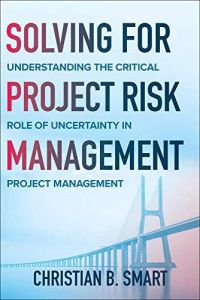加入 getAbstract 阅读摘要

加入 getAbstract 阅读摘要
Christian Smart
Solving for Project Risk Management
Understanding the Critical Role of Uncertainty in Project Management
McGraw-Hill, 2020
看看什么内容?
This project manager’s guide to risk management and contingency planning might help you avoid disaster.
Recommendation
As a PhD mathematician and data scientist, Christian Smart approaches project management a little differently than most authors. His emphasis on rigorous, quantitative risk management, based on correlations and probabilities, may stretch the traditional project manager. He surely intends this. For project managers willing to wade through it, though, Smart’s insights will undoubtedly improve risk management skills and project management outcomes overall. You’ll gain a greater appreciation for what can go wrong in major projects – and learn how to sidestep disasters.
Summary
About the Author
Christian B. Smart now serves as chief data scientist at Galorath Federal after a long career as project executive with NASA and the Department of Defense. He holds a PhD in applied mathematics.





















Comment on this summary